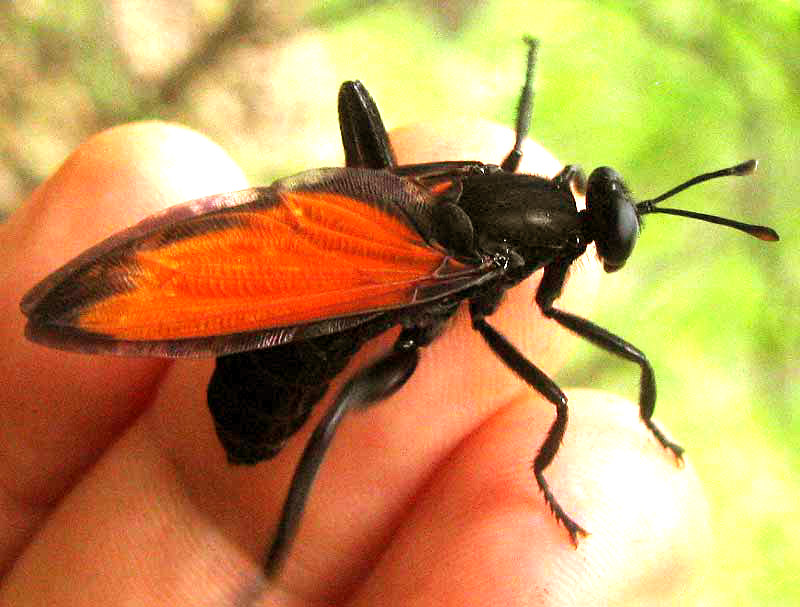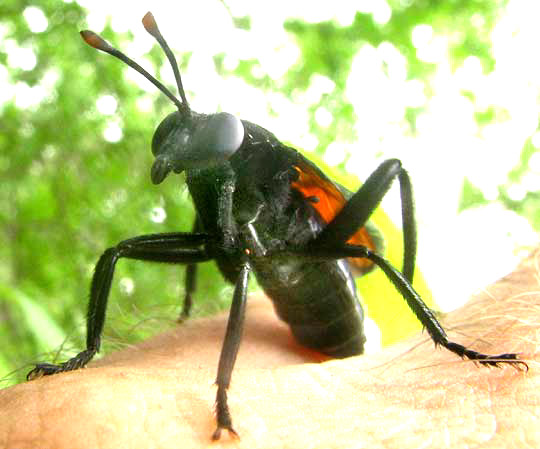Excerpts from Jim Conrad's
Naturalist Newsletter

from the June 29, 2014 Newsletter issued from the Frio Canyon Nature Education Center in the valley of the Dry Frio River in northern Uvalde County, southwestern Texas, on the southern border of the Edwards Plateau; elevation ~1750m (~5750 ft); N29.62°, W99.86°; USA
MYDAS FLY
In a shadowy grove of Texas Liveoaks on the Dry Frio floodplain, a knee-high herb that looked like it might eventually issue daisy-type flowers had a large, black wasp on it. With a bright, reddish warning spot on its wings the wasp rushed about on and beneath leaves, and up and down the stem, exactly as a wasp should when searching for spiders or caterpillars to sting and paralyze, to carry back to a freshly constructed nest to be sealed inside an egg chamber. When a wasp egg hatches next to such immobilized prey, the larva eats it as it develops toward its pupal stage.
It was so dark in the grove that I had to use a slow shutter speed on the camera, and the wasp was moving so fast, that I was sure my pictures were all turning out with the wasp appearing as no more than a blur. I tried an old trick, coaxing the insect onto my hand. Some insects find that so disorienting that they stay still long enough for a good shot. Maybe that's the reason I was able to get the fairly decent picture shown above.
But, something was wrong here. Wasps bear two pairs of wings but on this insect only one pair was apparent. Also, that's a funny head shape for a wasp. Finally the critter sat down and I turned him so as to better see the face, as shown below:

Wasp mouthparts are designed for chewing, but the mouth on this insect looks like a flat sponge at the end of short stem -- exactly what a fly has, and flies possess only one pair of wings. So what we have is a fly doing a good job mimicking a wasp. Maybe the reason this fly reacted to my nudging by "sitting down" was that when a wasp dips its rear end onto an animal bothering it, normally it's to sting in self defense. I'll bet that in the above picture the fly is mimicking not only a wasp, but a stinging wasp.
Volunteer identifier Bea in Ontario quickly figured out that we had a kind Mydas Fly, MYDAS XANTHOPTERUS. Members of the genus Mydas occur worldwide, but most commonly turn up in arid environments. Ours -- Mydas xanthopterus -- is distributed throughout the US southwestern states and adjacent northern Mexico. Among entomologists, mydas flies are a little famous because the largest of all flies is a kind of mydas fly.
I read that mydas flies are infrequently encountered because the adults don't live long. In fact, little is known about their life histories, though larvae of some species are thought to be subterranean predators of ants.